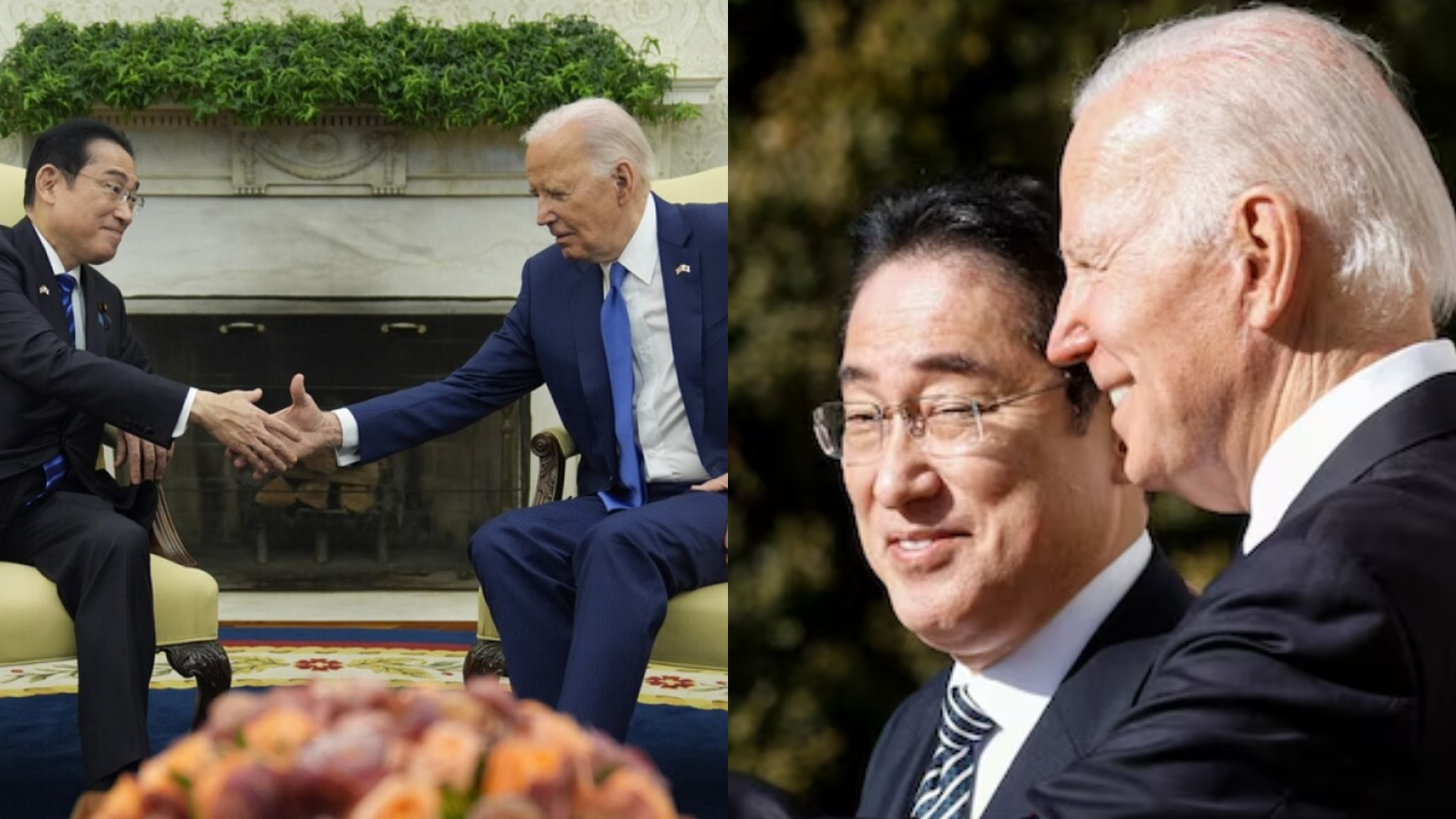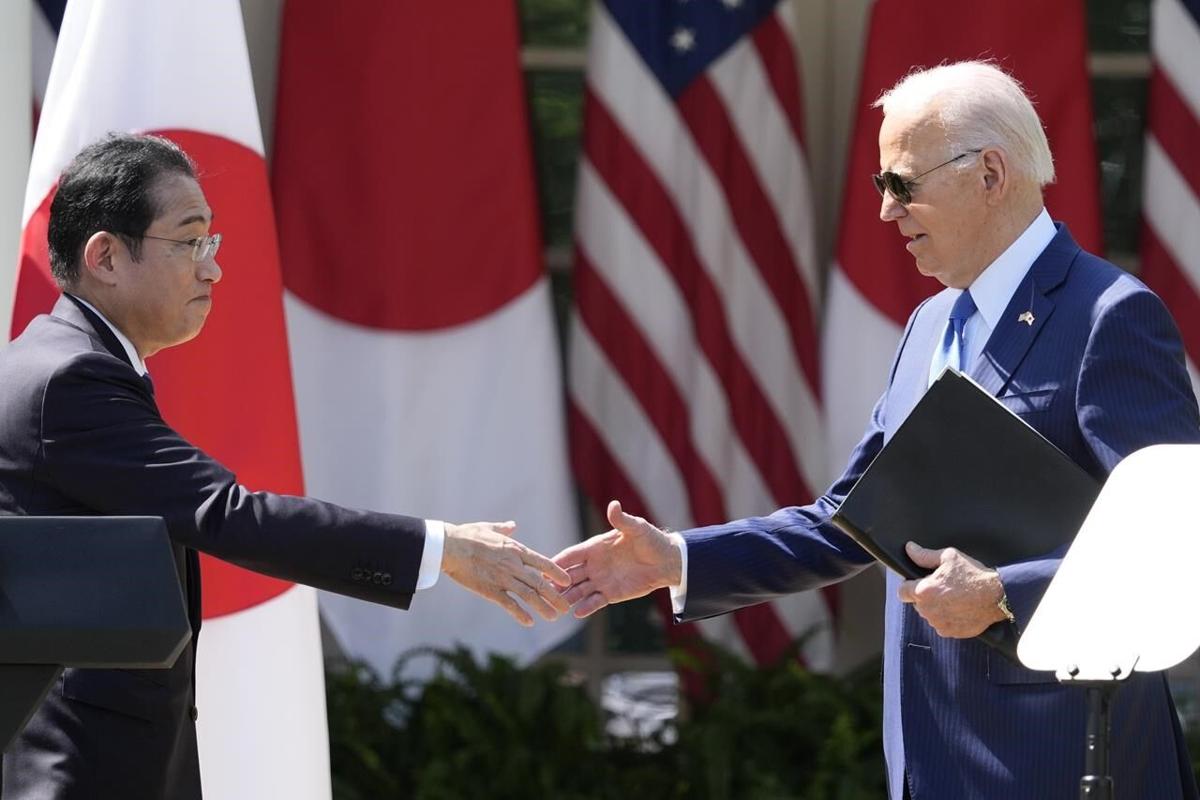US President Joe Biden welcomed Japanese Prime Minister Kishida Fumio for a state visit on Wednesday, emphasizing their commitment to strengthening the vital partnership in the Indo-Pacific region amidst China’s growing military and economic influence, as reported by Media.
During their crucial Oval Office meeting, Biden and Kishida discussed over 70 items across various critical sectors as part of their bilateral meeting. These included plans to alter the US force structure in Japan to enhance integration between Japanese and US forces, the establishment of a ‘military-industrial council’ to explore joint production of defense weapons, and initiatives related to integrating anti-missile defense with Australia and Japan.
The announcements mark a significant update to the nations’ military alliance, although some aspects will require time for implementation. Notably, the changes to the US force structure will take several months for both countries to work through, according to a senior official cited by Media.
Addressing the White House South Lawns on Wednesday morning, Biden underscored the historic alliance between the US and Japan, symbolized by Japan’s gift of 3,000 cherry trees over a century ago. He also acknowledged Japan’s commitment to plant 250 new trees along the Tidal Basin to commemorate the US’s 250th birthday in 2026.
Reflecting on the complex history between the US and Japan, Biden referenced his visit to Hiroshima last year and the devastating impact of the US atomic bomb during World War II. Despite this history, he emphasized the transformation of the two countries into close allies, stating, “Today, our democracies are beacons of freedom shining across the globe.”
The leaders are expected to detail collaborations in space exploration, with Japan expressing interest in landing its first astronaut on the Moon. Plans for increased people-to-people ties, such as joint AI research initiatives and scholarships for student exchanges, are also on the agenda.
However, amid the strengthening cooperation, differences have emerged on the economic front. Biden expressed opposition to Japan’s efforts to purchase US Steel, emphasizing his commitment to American workers. Kishida referred to the acquisition as an ‘investment’ in the US and expressed hope for positive discussions on the matter.
The meeting between Biden and Kishida is part of a broader effort to bolster alliances in the Indo-Pacific region, particularly in light of China’s assertive actions. Kishida reaffirmed Japan’s call for China to fulfill its responsibilities as a major power while seeking a constructive relationship.
These developments are part of a strategic effort to counter China’s efforts to isolate American allies like Japan and the Philippines. Japan, under Kishida’s leadership, has significantly shifted its defense posture, committed to increasing defense spending, and acquired American Tomahawk missiles for enhanced capabilities.
Before assuming office, Biden’s team emphasized tapping into alliances and partnerships in the Indo-Pacific, recognizing their potential in the region’s strategic landscape. The administration’s strategy aims to align allies’ objectives with the Indo-Pacific strategy, promoting a multilateral approach to regional challenges.
As the US and Japan continue to deepen their partnership, this state visit underscores their shared commitment to regional stability and security in the face of evolving geopolitical dynamics.























